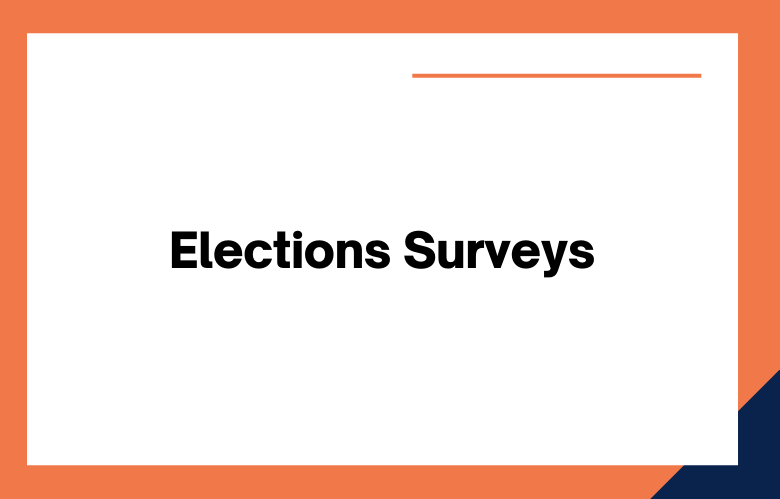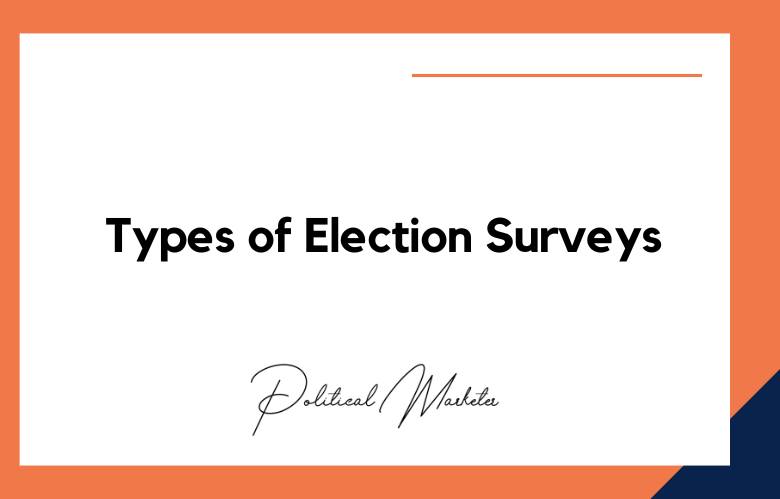Election surveys are a common way of gauging the public’s opinion on political candidates and issues. There are three main types of election surveys: pre-poll, exit-poll, and post-poll. Each type of survey has its strengths and weaknesses.
We will discuss the different types of election surveys and their uses. Stay tuned for future blog posts that will dive into more detail about each type of survey!
There are different types of political surveys: pre-poll, exit-poll, and post-poll. Each type of survey has its benefits and purposes. We will discuss each type of political survey in detail. Stay tuned!
What are Elections Surveys?
Surveys are an essential tool in any election. They can help the candidate learn about the needs and desires of the electorate. They also help campaign managers gauge how the winds are blowing and make necessary adjustments.
Elections Surveys are essential tools to provide critical information about voter preferences and election outcomes. However, designing an effective survey is not easy.
Election surveys are a tool that can be used for various purposes. One such goal is to measure public opinion. By conducting surveys, researchers can gain valuable insights into what people think about a particular product or service.
Elections Surveys are polls organizations or governments conduct to gauge public opinion on a given issue or candidate. They are often used to help predict the outcome of an election.
Types of Political Surveys (Pre-Poll, Exit Poll & Post-Poll)
Pre-Poll Surveys:
A type of survey is taken before an event, such as an election, to predict the outcome.
A pre-poll is a type of political survey conducted before an election. It helps to gather information about voter preferences and opinions.
A pre-poll survey is conducted to gauge the electorate’s opinions before an election.
Pre-poll surveys are conducted before the voting begins in an election. They are used to gauge voter sentiment and predict the election outcome.
Exit Polls:
A survey of people leaving a polling station after voting was used to estimate how the election had gone.
An exit poll is a political survey conducted after voters have cast their ballots. It helps to gather information about why voters made their choices.
An exit poll is an opinion poll conducted as people exit the polling station after casting their vote.
Exit polls are conducted after voters have cast their ballots. They are used to determine which candidate or party is winning the election.
Post-Poll Surveys:
After an event, such as an election, a survey was taken to determine how accurate the predictions were.
A post-poll is a type of political survey conducted after an election. It helps gather information about how voters feel about the election outcome.
After an election, a post-poll survey assesses the electorate’s thoughts and opinions.
Post-poll surveys are conducted after the election results have been announced. They are used to understand why voters choose the winning candidate or party.
Best Practices for Conducting Elections Surveys
- Survey questions should be clear and concise.
- Ask only one question at a time so the respondent can answer without confusion.
- Make sure all of your survey questions are relevant to the topic you’re surveying about
- Avoid asking leading or biased questions that will skew the results in favor of respondents with certain opinions.
- Make sure your questions are as unbiased as possible
- Use a variety of methods to collect data, like online surveys and phone interviews
- Include an option for those who do not want to answer any questions on the survey
- Create a survey that is easy to understand and answer
- Include only one question per survey
- Find the most appropriate time of day for your target audience to take the survey (i.e., morning, afternoon, evening)
- Provide an incentive for people taking the surveys
- Ask participants if they would like to be contacted again in the future
- Develop a survey plan
- Determine the sample size
- Conduct the survey in person or over the phone, not through email or online surveys.
- Ask only one question at a time, and be specific about your request.
- Ask open-ended questions that allow respondents to answer in their own words instead of yes/no.
- Define the questions and demographics of your survey
- Analyze the results of your survey to produce conclusions, recommendations, and action items
- Identify the purpose of your survey
- Define who or what you are surveying
- Determine how many people to explore and how you will reach them
- Plan for data analysis, including identifying variables and creating a coding system that is easy to follow
- Develop questions carefully- avoid leading questions or those with unclear meaning
- Determine the purpose of the survey
- Define the target population and determine how they will be sampled
- Decide on a method for collecting data (email, phone call, in-person)
- Develop questions that are clear and concise while being unbiased
- Include demographic questions to make sure you’re getting an accurate representation of your population
- Avoid leading or misleading questions by using neutral language and not including any unnecessary information about who may have created the survey or why it was created
- Identify the population to survey
- Find out their demographics and interests
- Decide on a questionnaire or interview format
- Create an efficient plan for conducting the interviews, including scheduling and recruiting participants.
- Develop unbiased, easy-to-answer questions, and cover all topics of interest in detail.
- Get feedback from experts before publishing results
- Define your survey goals
- Determine the sample size and what population you want to survey
- Choose a sampling method that suits your needs- for example, random digit dialing or snowball sampling
- Select an appropriate questionnaire format (e.g., closed-ended vs. open-ended)
- Develop questions that are clear, unambiguous, and unbiased (avoid leading statements)
- Plan for your survey
- Be clear about how you will use the data and what is being surveyed
- Make sure to include a question on who should be contacted in case of an emergency
- Check that all questions are relevant to the survey’s topic, but don’t make it too long or difficult
- Avoid leading questions that might skew responses in any direction.
Conclusion
Exit polls are conducted as people leave the voting booth and ask who they voted for.
This information is used to determine how accurate the pre-poll survey results were.
Post-poll surveys are sent to registered voters to understand who voted and why after an election.
If you’re interested in conducting your political survey, contact us today.
We will help you design and implement a survey to provide valuable insights into the voting process.
One way to get in touch is by filling out our online form on this site or give us a call at
+91 9848321284. Let’s work together today!










